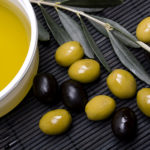By Bonnie Jenkins, Advanced Natural Wellness
There are a lot of great things about being a woman over 50. For most of us, the kids are grown and gone – allowing us to explore roads not traveled in our younger years. For some, that means a change in careers or learning a new skill. Others learn to be self-sufficient. Still other women discover a latent creativity that brings joy and meaning to life.
Of course, not everything is rosy after you hit your fifties. One of the rude realities of being post-menopausal – changes in your health. And one of the first things to start slip-sliding away? Your bones. In fact, during the first five to ten years after menopause, women can suffer two to four percent loss of bone density per year! This can result in a total loss of up to 25 to 30 percent of their bone density.
Fortunately, this loss isn’t cast in stone. Italian researchers recently found that taking calcium, vitamin D and supplements containing a soy compound called genistein not only protects the bone you’ve got, it may help increase bone mass after menopause.
Soy Healthy
During the study by investigators at the University of Messina in Italy, women who took the soy compound showed a modest increase in bone density over two years, compared with a small decrease among women who used only calcium and vitamin D. Genistein is a type of isoflavone, plant chemicals that have effects similar to the female hormone estrogen. The estrogen decline that follows menopause contributes to bone density loss, and some research has linked high soy intake from food to a lower risk of the bone-thinning disease osteoporosis.
Open your arteries, improve blood flow for a new health miracle...
Did you know your circulatory system has over 60,000 miles of arteries, veins and other blood vessels, if stretched end to end?
But as you age, your blood vessels undergo changes, which may cause them to stiffen, thicken and get clogged.
GOOD NEWS! Doctors have now identified a “Miracle Molecule” inside your arteries that helps OPEN your arteries and IMPROVE blood flow.
It’s what Dr. Valentin Fuster calls it, "One of the most important discoveries in the history of cardiovascular medicine."To you, that means...
- Healthy blood pressure
- Sharper mind and memory
- Skyrocketing energy and muscular strength
- Increased pleasure and passion in the bedroom
- Improved circulation to every cell and organ in your body
Go here to discover a new natural way to significantly boost the levels of this miracle molecule in YOUR body NOW!
So should you start loading up on tofu and soymilk? Well, yes and no. While these foods are good for you, the problem with getting your soy solely from food is the sheer volume you would have to consume to get the same results you’d get with supplements. For example, a woman would need to drink two gallons of soy milk or eight pounds of tofu per day to get the same benefit. This new research, on the other hand, used a nearly pure chemical from soy that you can’t obtain in sufficient quantities by simply eating more soy products.
Boning Up
The study involved 389 postmenopausal women with lower than normal bone mass that hadn’t yet progressed to osteoporosis – a condition known as ostopenia. The women were randomly assigned to take either 54 mg. of genistein or a placebo every day for two years. Both the genistein and placebo pills also contained 500 mg. of calcium and 400 IU of vitamin D.
After two years, bone scans showed that, on average, the women who took genistein had gained bone density in the hip and lower spine, while those in the placebo group had lost bone mass. And the supplemental soy compound was exceptionally safe. During this study, the women on genistein showed no thickening in the lining of the uterus, a sign of adverse hormonal effects. Instead, the main side effects were minor gastrointestinal problems like indigestion and constipation.
Are You Suffering From...
- Love handles and a pot belly
- Romance that isn't what it used to
- Forgetfulness and inattention
- Low (or no) strength and endurance
- A sex drive that's shifted into neutral...or worse
If so...you may have Mature Male Burnout. Click here to discover more about this unique condition and what you can do about it.
But, even though side effects were minor, the dose used in this study was extremely large. If you’d like to try a supplement containing high amounts of genistein, check with your doctor first – especially if you are at high risk for breast or uterine cancer.
One Last Thing …
I’ve said it before, but it bears repeating. If you are worried about bone loss – get moving! In a review of 24 studies examining aerobic exercise and bone mineral density in women, researchers at the Massachusetts General Hospital Institute of Health Professions in Boston found that subjects who walked an average of 30 minutes, three times a week for at least 16 weeks experienced significant bone-mass gain. In comparison, non-exercisers experienced a bone-mass decrease of nearly 2 percent in that time period.
Exactly what kind of exercise is best for the bones? Any kind of weight-bearing exercise, during which you’re moving and supporting the weight of your own body, helps boost the mineralization (buildup) of calcium and increases bloodstream levels of the growth hormones that are major players in bone formation. Weight lifting, running, step aerobics, dancing, stair climbing, skiing, skating, karate, bowling, racquet sports and hiking are all excellent osteoporosis-preventing workouts, as are team sports such as basketball, volleyball, softball, hockey and soccer.
If you prefer a less strenuous approach to bone fitness, easy walking is a great way to stave off bone-related disabilities. It places regular, light impact on the bones and joints, decreasing your risk of fracture by 30 percent. More strenuous power walking decreases your risk of falling and suffering a bone fracture by almost 50 percent. Yoga and Pilates are also effective choices, since certain poses, such as bridge and prone cobra, support abdominal stability and protect the spine.
This Just In …
Good news – and just in time for that summer cold. Echinacea, the herb recently dismissed by the New England Journal of Medicine as “worthless,” seems to work after all. In fact, it’s so effective; it can slash the odds of catching a cold in half! That’s what researchers at the University of Connecticut School of Pharmacy found when they reviewed the results of 14 studies that looked at the effectiveness of echinacea to protect against colds.
The studies reviewed by the UConn team involved 1,600 people who used various brands of echinacea supplements. After analyzing all of the data, they found that echinacea reduced the risk of catching a cold naturally by an impressive 58 percent. Even when patients were directly inoculated with rhinovirus – the most common cold-causing virus – echinacea reduced the risk of colds developing by 35 percent. And if you do come down with a cold, taking echinacea can decrease the number of days you’ll be under the weather by around 1.5 days.
To keep colds at bay, you can take 125 mg. of echinacea twice a day on an ongoing basis. For best results, take echinacea for six to eight weeks followed by a two week break before restarting use. And make sure you get a supplement that has been standardized to contain four percent echinacoside to support the immune system.
What if you catch a cold anyway? The minute you feel the sniffles coming on, boost your intake to 300 mg. every two hours for the first day of illness, then three times per day for a total of seven to 10 days. Combine that with plenty of rest, fluids and, of course, chicken soup, and you’ll be back on your feet in no time at all!
References:
Kelley GA, Kelley KS. “Exercise and bone mineral density at the femoral neck in postmenopausal women: a meta-analysis of controlled clinical trials with individual patient data.” American Journal of Obstetrics and Gynecology. 2006;194:760-767.
Marini H, Minutoli L, Polito F, et al. “Effects of the phytoestrogen genistein on bone metabolism in osteopenic postmenopausal women: A randomized trial.” Annals of Internal Medicine. 2007;146: 839-847.
Shah SA, Sander S, White CM, et al. “Evaluation of echinacea for the prevention and treatment of the common cold: a meta-analysis.” Lancet Infectious Disease. 2007;7:473-480






